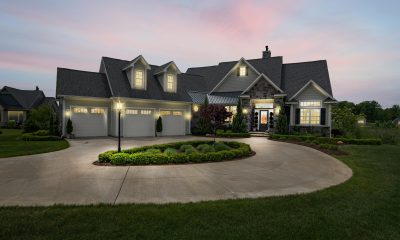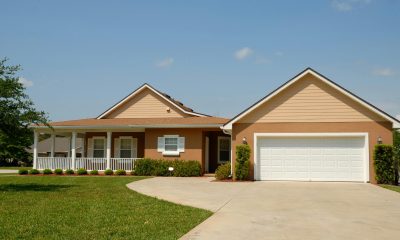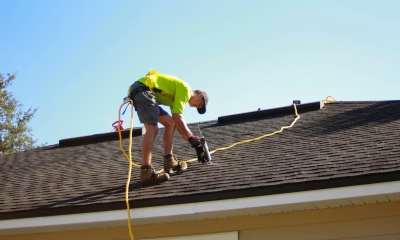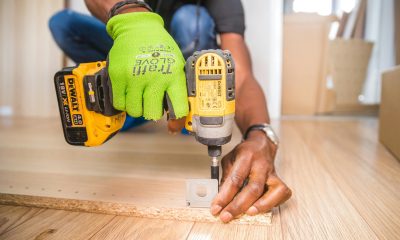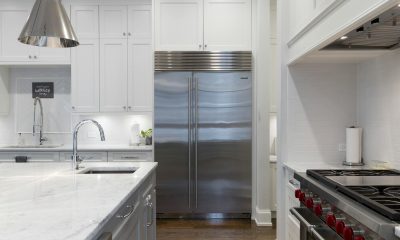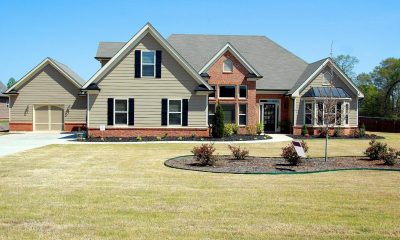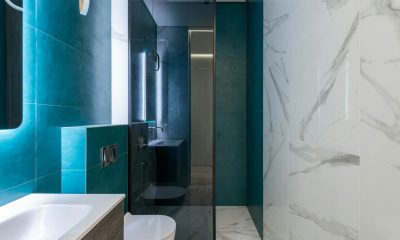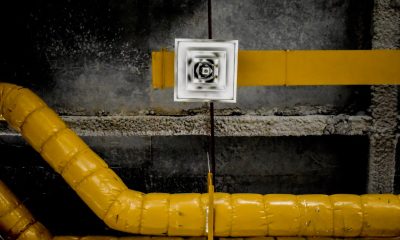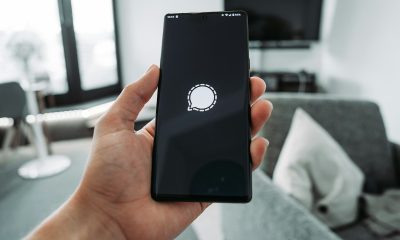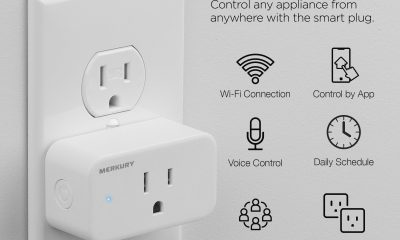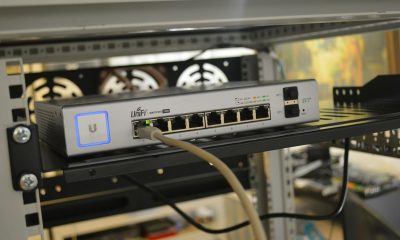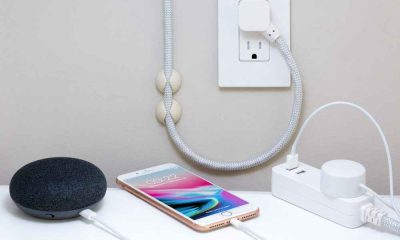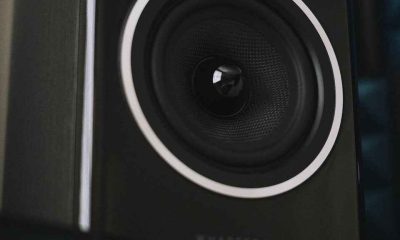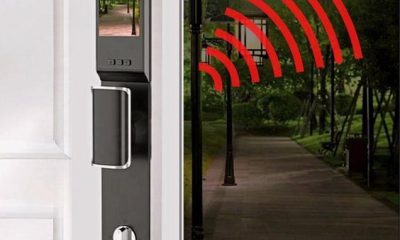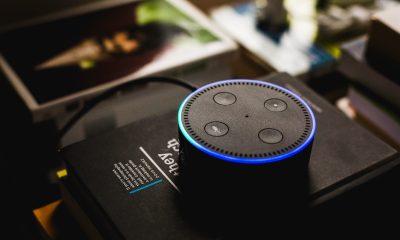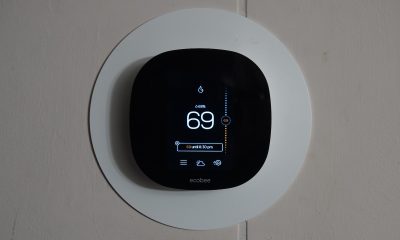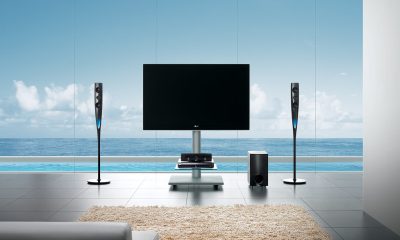Guides
How to Build an Integrated Smart Home Security System for Any Home?
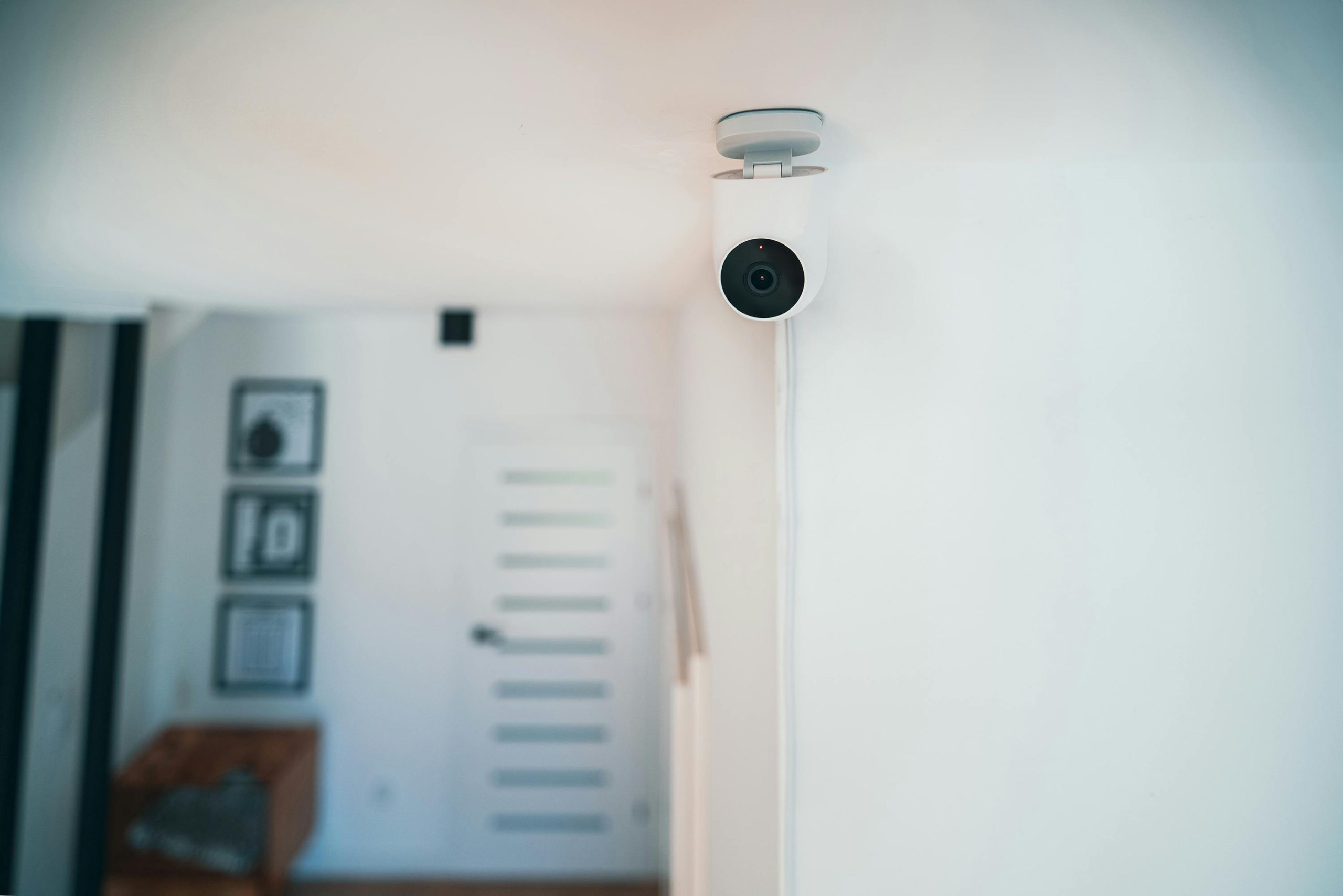
Smart home security isn’t about stacking gadgets. It’s about designing a simple, layered system that deters intruders, detects problems quickly, documents what happened, and keeps working when your internet goes down. Whether you rent a studio or own a multi-story house, the process is the same: protect the perimeter, secure the interior, harden the network, and tie everything together with automations you can trust.
This guide walks you through the exact steps, the gear categories that matter, where to put devices, how to handle monitoring and permits, and the gotchas that cause most DIY systems to fail.
1. Start with a quick risk map
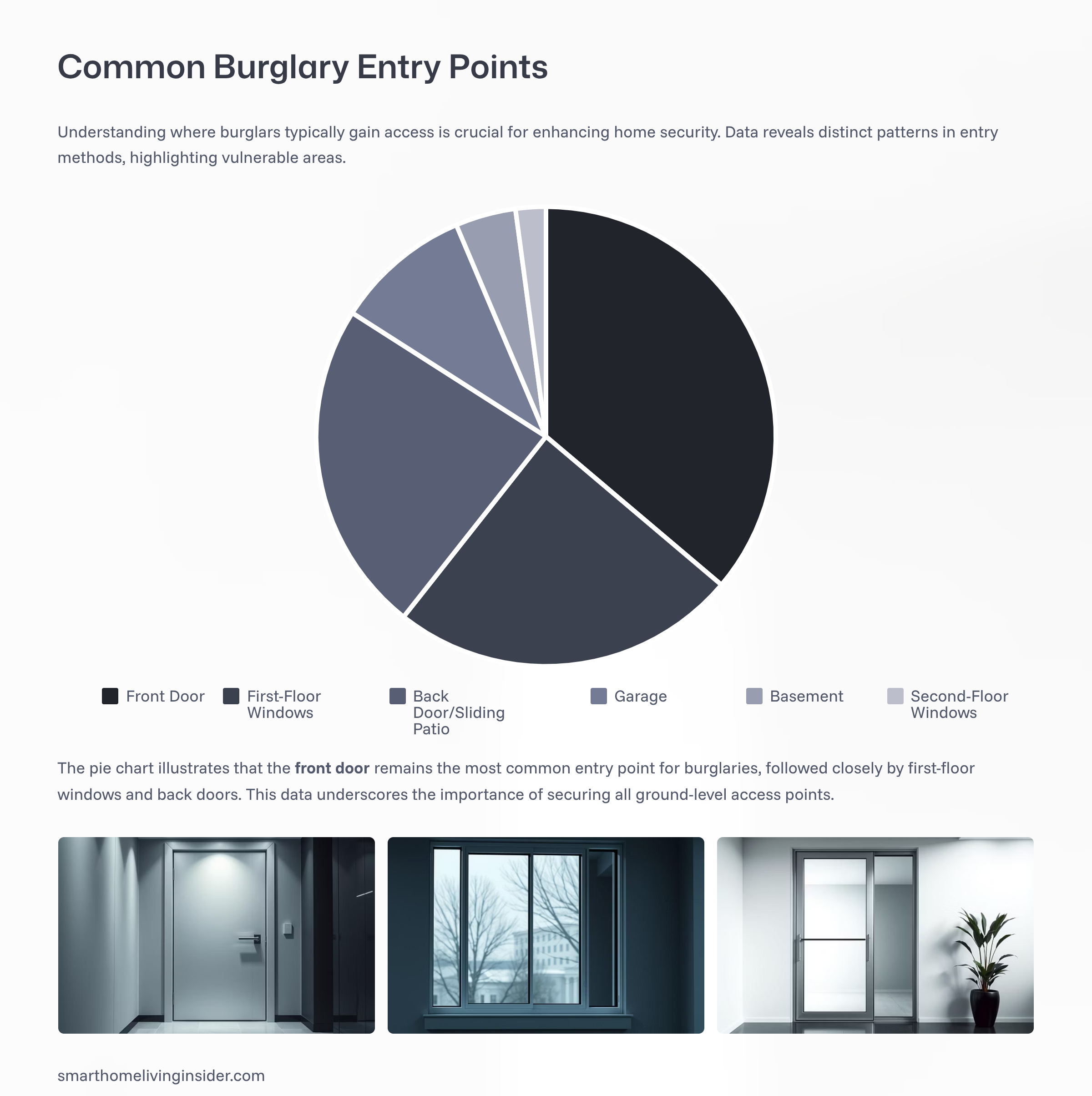
Most burglars enter through the front door (34%), followed by first-floor windows (23%) and back doors (22%), making these the most critical access points to secure (ADT, Reolink, MoneyGeek).
Before buying anything, answer three questions:
-
What are your likely threats?
-
Opportunistic break-ins through doors and first-floor windows
-
Package theft
-
Vandalism in the driveway/yard
-
Water leaks, smoke/CO incidents, or unauthorized access while you’re away
-
-
What do you need to see or prove later?
-
Clear faces at the front door
-
Plates/vehicles in the driveway
-
Movement through a main hallway
-
Timestamps of doors opening, locks changing state, and alarms arming/disarming
-
-
What constraints do you have?
-
Renting (no drilling, no NVR in a closet)
-
Limited outlets or no ethernet on exterior walls
-
Patchy Wi-Fi outdoors
-
Neighbors’ privacy or HOA rules
-
This quick map dictates camera placement, sensor count, networking, and how simple or advanced your automations should be.
2. Pick your control layer (hub/ecosystem) the right way
You need one “brain” to unify sensors, locks, sirens, lights, and cameras. Popular options:
-
Apple Home (Home app + HomePod/Apple TV): privacy-forward, excellent door lock and sensor support, HomeKit Secure Video for supported cameras.
-
Google Home / Alexa: wide device support and routines, strong voice control.
-
SmartThings: broad compatibility with Zigbee/Thread/Matter and many cloud integrations.
-
Home Assistant or Hubitat (local-first): deep customization, local automations, broad protocol support, great for power users. Home Assistant even includes a Manual Alarm Control Panel so you can build a full alarm workflow without a vendor subscription. Home Assistant
A note on Matter, Thread, and cameras
Matter (the new, cross-brand standard) is real and getting better, especially for sensors, locks, plugs, and water valves. But as of 2025, Matter still doesn’t natively support security cameras or video doorbells, so you’ll rely on platform-specific integrations (e.g., HomeKit Secure Video) or use local RTSP/ONVIF with NVRs and software like Home Assistant. WIRED
Matter’s promise—interoperability, local control, and better security—still makes it a smart bet for contact sensors, motion sensors, locks, and water shutoff valves. CSA-IOT
Decision rule: choose the ecosystem that already runs on your phone and smart speakers. If you want maximum control and local automations, add Home Assistant alongside your main ecosystem; it can bridge many devices and lets you keep more functions working even when the internet is down. See Home Assistant’s security hardening guidance before exposing it remotely. Home Assistant
How Burglars Break In (Data Report & Chart)
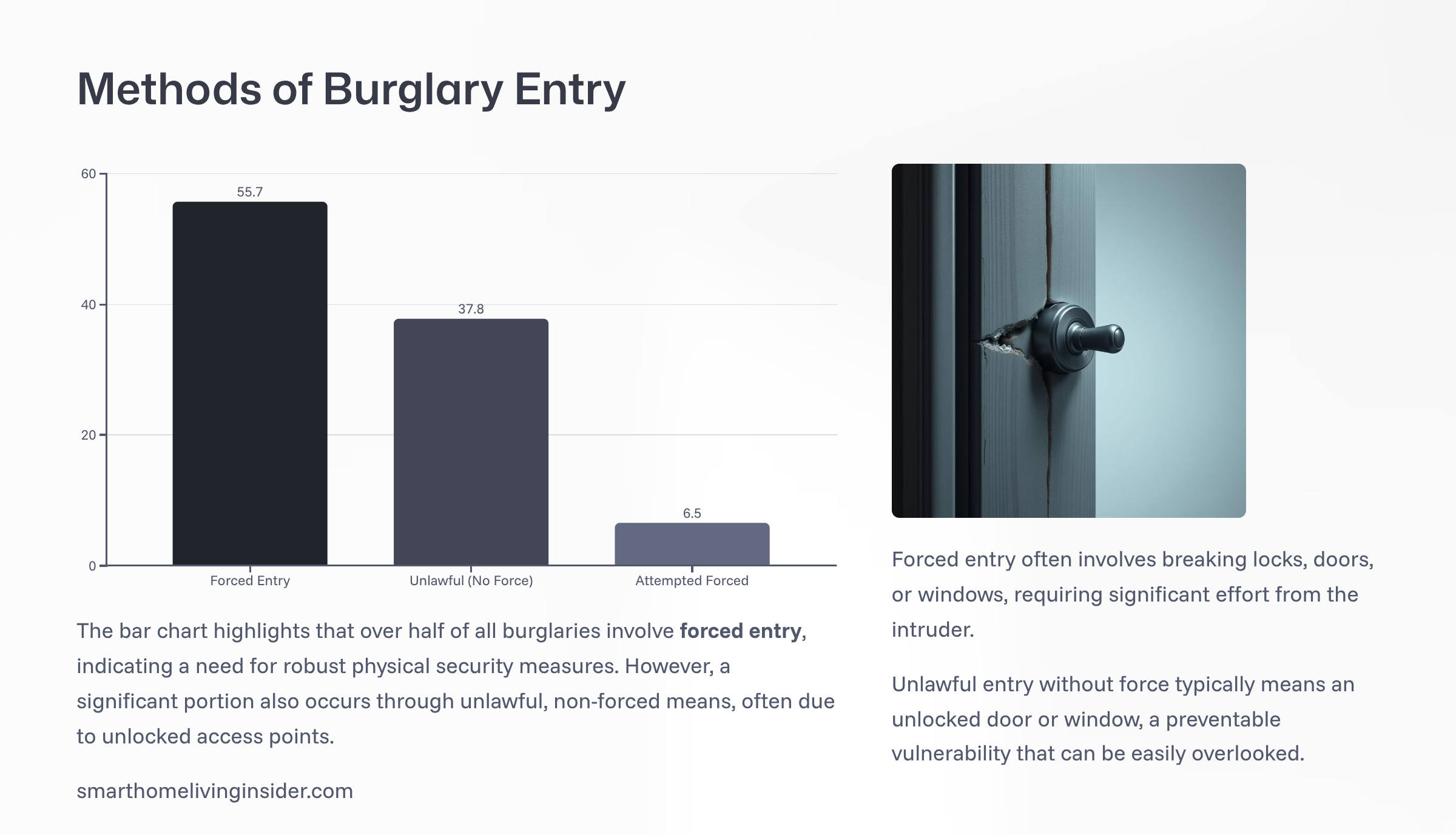
Over half of all burglaries involve forced entry (55.7%), but 37.8% occur through unlocked doors or windows, underscoring the importance of strong locks and secured access (FBI UCR)
3. Build a layered architecture (what to install—and where)
Once your hub is in place, begin adding smart devices that enhance security and awareness. Smart locks allow you to control access remotely and grant temporary permissions to guests or service providers.
Doorbell cameras provide a live view of visitors and can record interactions. Motion sensors and glass break detectors add another layer of protection by alerting you to unusual activity. One of the most valuable additions is a security camera system, which offers continuous surveillance and can be accessed from anywhere.
These systems often include features like night vision, two-way audio, and cloud storage, making it easier to monitor your property and respond to incidents.
You’ll get the best results by combining a few core layers:
Layer A — Perimeter awareness (deterrence + detection)
-
Video doorbell at 8–10 ft high to capture faces and packages without blinding glare. Tom’s Guide
-
Front door, back/side doors, and first-floor windows covered by cameras or sensors (contact + motion). Intruders target the same entries you use, so give these the highest priority. Security.org
-
Driveway/garage coverage to catch approaches and vehicles. Mount cameras to see faces and—if your laws allow—plates, while avoiding neighbors’ private windows. Tom’s Guide
-
Visible deterrents: motion lights and a small sign noting cameras/monitoring reduce attempts before they start.
Camera placement basics: cover entries first (front, back, side), main hallway/stair inside, and driveway. Mount ~8–10 ft high, avoid aiming directly into the sun or bright windows, and prune vegetation that blocks views. Tom’s Guide
Layer B — Interior awareness (failsafe if perimeter is bypassed)
-
Main hallway or stair camera (not bedrooms/bathrooms—privacy matters). Security.org
-
Motion sensors in connecting areas (hallway, living room) to trigger sirens and lights.
-
Siren that can be automated when the alarm is tripped (both indoor and a tempered outdoor siren if local laws allow).
Layer C — Life safety and property sensors
-
Smoke and CO detectors (stick with reputable brands; where integrated control units are used, UL 985/UL 1023 certification is the benchmark for fire/burglar systems). UL Standards ShopIntertek
-
Water leak sensors + smart water shutoff valve at washing machine, water heater, sinks.
-
Garage door tilt sensor to auto-close at night or notify when left open.
Layer D — Access control and lighting
-
Smart locks with per-user codes (no sharing logins).
-
Pathway and exterior lighting on schedules and motion; tie them to camera motion after dark.
4. Choose the right transport (Wi-Fi, Thread, Zigbee, Z-Wave, PoE)
-
Wi-Fi is ubiquitous and perfect for doorbells and many cameras, but don’t flood a cheap router with 30 devices.
-
Thread is a mesh protocol designed for low-power sensors and locks; it works well under Matter.
-
Zigbee/Z-Wave remain solid in many alarms and sensors; many hubs bridge them into your ecosystem.
-
PoE (Power over Ethernet) for stationary cameras: one cable powers the camera and carries data to your NVR/switch; it’s stable and avoids Wi-Fi congestion.
Simple rule:
-
Cameras = PoE where possible; Wi-Fi only where you must.
-
Sensors/locks = Thread or Zigbee (lower power, better battery life).
-
Keep cameras and NVRs on ethernet whenever feasible.
5. Nail the network (where most security builds fall apart)
Great cameras and sensors won’t save you if your network is weak. Use the same baseline that government and security pros recommend for home networks:
-
Segment your Wi-Fi into at least three networks: primary (laptops/phones), guest, and IoT. This limits what a compromised smart device can reach. U.S. Department of Defense
-
Change default passwords and admin ports. Default credentials are the single biggest IoT risk. CISA
-
Update firmware and router OS on a schedule; disable unnecessary services; avoid UPnP unless you truly need it. CISA
-
Use a firewall and avoid exposing devices directly to the internet. If you must access your system remotely, use a VPN or a secure cloud relay you trust. U.S. Department of Defense
-
Harden your controller (e.g., Home Assistant) following its security guide: strong secrets management, SSH keys, and no open inbound ports without reason. Home Assistant
How Fast a Burglary Happens (Data Report)
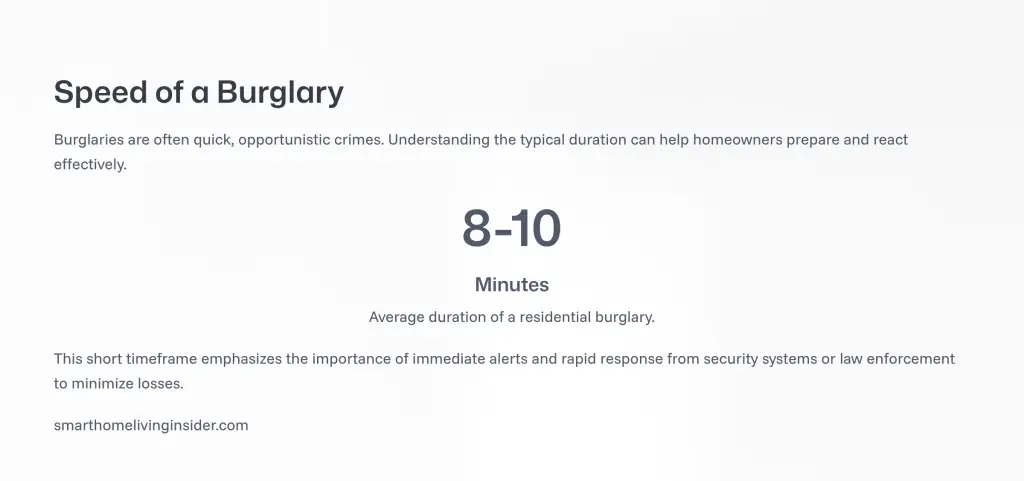
The average burglary takes just 8–10 minutes, emphasizing the need for immediate alerts, rapid response, and proactive deterrence (FBI, Reolink)
6. Pick between local, cloud, or hybrid video
-
Local (NVR, NAS, or Home Assistant) gives you control and no monthly storage fees. Look for RTSP/ONVIF-compatible cameras and wired ethernet if possible.
-
Cloud is simpler to set up and includes easy sharing and AI detection, but it can mean monthly fees and connectivity dependency.
-
Hybrid (local recording + cloud alerts) is often ideal: you keep 24/7 footage locally but still get mobile alerts and AI events.
Because Matter doesn’t cover cameras yet, your best path is either HomeKit Secure Video, vendor cloud apps, or a local NVR stack. WIRED
Why Visible Security Systems Work (Data Insights)
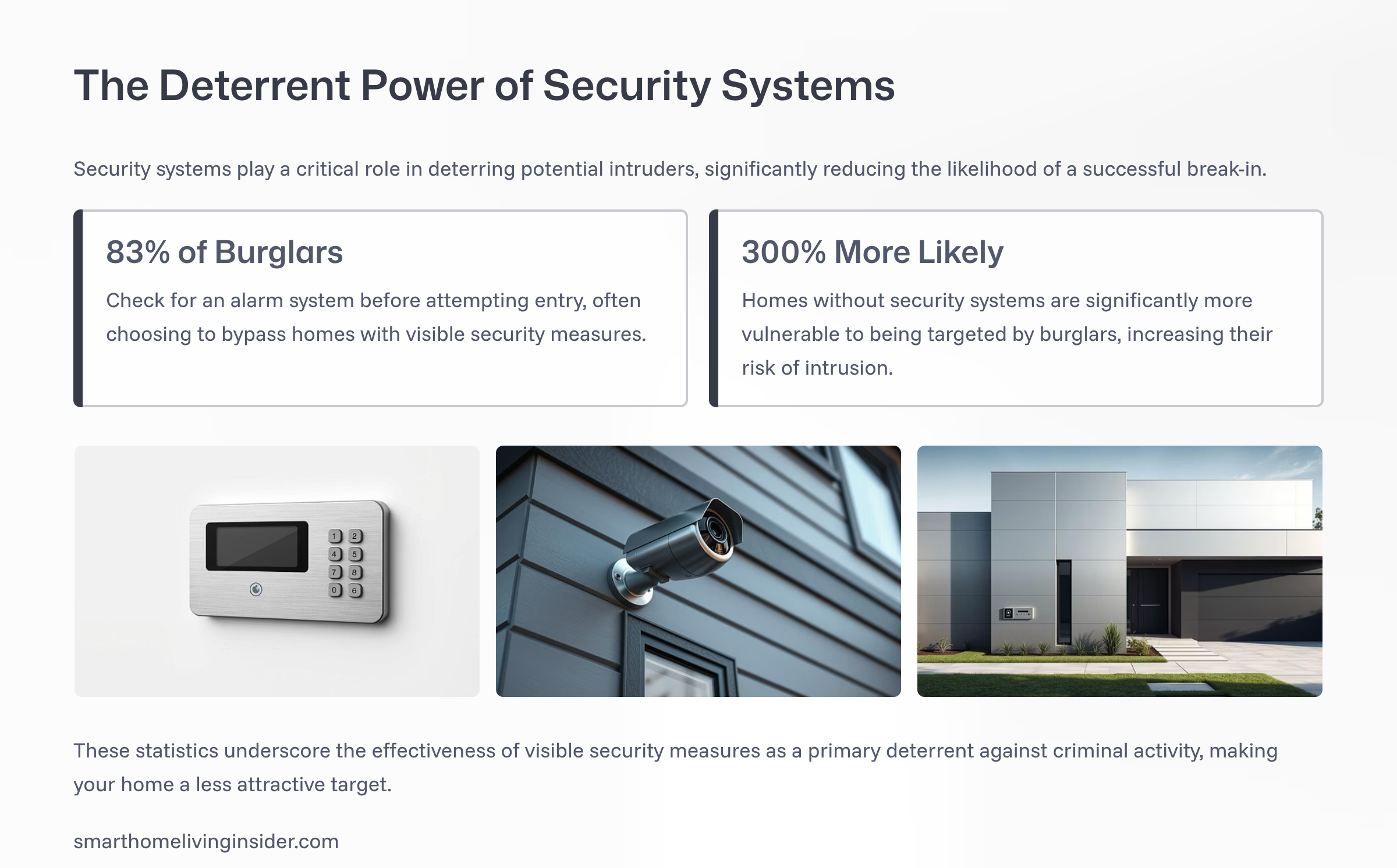
Visible security systems deter intruders: 83% of burglars check for alarms first, and homes without security are 3× more likely to be targeted (FBI via The Zebra, Alarm.org)
Visible security systems deter intruders: 83% of burglars check for alarms first, and homes without security are 3× more likely to be targeted (FBI via The Zebra, Alarm.org)
7. Monitoring: self, professional, or both?
-
Self-monitoring: you get notifications and decide when to call for help. It’s cheap, but you could miss alerts while in a meeting or on a flight.
-
Professional monitoring: a central station contacts you and dispatches responders when needed. In many jurisdictions, a permit is required for professionally monitored systems, and false alarms can carry fines. Check your city’s rules before you enable pro monitoring. RingADT HelpSecurity.org
Tip: even if you start self-monitored, learn your local alarm-permit rules so you don’t get penalized if a neighbor calls police during a siren event. Evansville Police Department
8. Power and resilience (make it work when the power blinks)
-
UPS (battery backup) for your modem, router/switch, hub/controller, and cameras/NVR.
-
Cellular backup if you rely on professional monitoring or need alerts during internet outages.
-
Local automations for core security (arming/disarming, siren triggers, lighting on motion) so they still work without cloud access.
9. Exact device placement (field-tested patterns)
Use these placements to cover 95% of common homes:
Outside
-
Doorbell at 8–10 ft.
-
Front approach camera angled to catch faces walking up (avoid pointing at street glare).
-
Garage/driveway camera set to see vehicles entering and people approaching side doors.
-
Rear/side doors covered with a second camera or at least a motion light + contact sensor.
-
Avoid bedrooms/bathrooms and never aim into neighbors’ private spaces; use privacy zones. Tom’s Guide
Inside
-
Main hallway/stair camera to record movement between rooms (if you use indoor cameras).
-
Contact sensors on all exterior doors + first-floor windows.
-
Motion sensors in connecting spaces to trigger sirens/lights when armed.
Why this works: If someone bypasses an exterior camera, the hallway/stair camera is your last line: it records anyone moving deeper into the home. The doorbell gives the best face shots and package proof. The driveway shows vehicles and direction of travel.
For camera placement fundamentals and priority locations, see independent guides emphasizing doors, back/side entries, driveways/garages, main hallways, correct height, and avoiding glare. Security.orgTom’s Guide
10. Automations that actually add security (not just “smart” fluff)
Automations should reduce risk, not create noise. Keep them short, explainable, and testable.
-
Arming scenes you’ll use
-
Home: perimeter sensors notify but no siren; interior motion disabled.
-
Away: all sensors armed; motion triggers siren.
-
Night: perimeter armed; indoor motion only in downstairs zones.
-
-
Lighting as deterrent
-
At sunset, enable “motion → porch light for 3 minutes” and “driveway motion → garage sconces + camera snapshot”.
-
If alarm = tripped, turn on interior lights in a path from entry to exit.
-
-
Lock discipline
-
If door unlocked after 10 pm, send alert and re-lock after 2 minutes unless presence = true.
-
Assign per-user PINs for guests and cleaners; alerts on first use.
-
-
Life safety
-
If water sensor = wet, close the smart shutoff valve and text a photo of the leak location card taped nearby.
-
If smoke detected, unlock smart locks and turn on hallway lights.
-
-
Privacy rules
-
Automatically disable indoor cameras when you’re home, and re-enable when away.
-
11. A renter-friendly kit vs. a homeowner kit (modular bill of materials)
Renter-friendly (no drilling or rewiring)
-
Video doorbell with a wedge mount or a no-drill mount
-
Wi-Fi cameras for front approach and a single interior hallway (if acceptable)
-
Contact sensors on doors + a couple of key windows
-
Motion sensor in living area
-
Smart lock with keypad (keep the original lock for move-out)
-
Plug-in siren and a small UPS for router + hub
-
Cloud recording or a tiny local recorder you can take with you
Homeowner (more permanent, more resilient)
-
PoE doorbell and PoE exterior cameras to an NVR or NAS
-
Hard-wired motion lights and a 100–200W PoE switch on a UPS
-
Thread/Zigbee contact and motion sensors for low battery drain
-
Whole-home leak sensors + motorized water shutoff
-
Smoke/CO network tied into your system; where applicable, align with fire/burglar standards (UL 985/UL 1023 equipment). UL Standards Shop
12. Privacy, compliance, and being a good neighbor
-
Get consent where required and avoid filming into neighbors’ windows or private spaces; use privacy zones and face-blur where available.
-
Tell household members how cameras and mics work, and create “no camera” spaces.
-
Know your city’s alarm permit rules if you enable professional monitoring. Fines for false alarms are common, and many places require registration. RingSecurity.org
13. A weekend build plan (you can copy this)
Friday night
-
Map your entries and walkways; mark camera fields of view on paper.
-
Create three Wi-Fi networks: Primary, Guest, IoT. Change default router/admin passwords. U.S. Department of DefenseCISA
Saturday
-
Mount doorbell and exterior cameras (8–10 ft). Aim, test at night, tune motion zones. Tom’s Guide
-
Install contact/motion sensors.
-
Set up your hub/controller; create Home, Away, and Night security modes.
Sunday
-
Add smart locks and lighting automations for dusk-to-dawn and motion.
-
Set up notifications that are specific (which door, which camera, with snapshot).
-
Document your system: where devices are, how to reboot, how to silence a false alarm.
-
If you’ll use pro monitoring, file the alarm permit now. Ring
14. Troubleshooting the problems that sink most DIY builds
-
Too many false alerts: reduce motion sensitivity, use “people-only” detection, narrow activity zones, and avoid branches/flags in the frame.
-
Wi-Fi congestion: move cameras to ethernet/PoE or put them on the IoT SSID.
-
Night glare and blown-out faces: lower the camera a bit, shift the angle, and add a small warm-white flood light to balance exposure. Tom’s Guide
-
Missed recordings: increase pre-buffer/recording length; for battery cams, consider wired power where feasible.
-
Automation loops: set quiet hours and “don’t re-trigger within X minutes” conditions.
The Hidden Risk: Unlocked Doors and Windows (Data Insights)

More than a third of burglaries (37.5%) happen through unlocked doors or windows, a simple vulnerability homeowners can easily prevent (Deep Sentinel)
15. FAQs
Do I need a smart hub?
Not always. If you only want a doorbell and one camera, you can run vendor apps. But once you add locks, sensors, and lighting, a unified controller makes automations reliable and keeps more logic local.
Can I future-proof with Matter?
Matter is great for sensors/locks and runs locally over Thread/Wi-Fi. It still doesn’t include cameras or doorbells, so plan for a separate path there (HomeKit Secure Video, vendor cloud, or local NVR). WIRED
What about professional monitoring?
If you enable it, many cities require an alarm permit, and fines can apply for false alarms. Check your city’s rules before switching it on. RingSecurity.org
How should I place cameras for best coverage?
Cover the front door, back/side doors, driveway/garage, and a central indoor path. Mount 8–10 ft high and avoid direct sun and reflective glare. Tom’s Guide
16. The minimalist shopping list (by role, not brand)
-
Doorbell camera (wired if possible)
-
2–4 exterior cameras (PoE preferred)
-
Contact sensors for every exterior door + first-floor windows
-
1–2 interior motion sensors
-
Smart lock with keypad
-
Interior siren (and outdoor siren if allowed)
-
Water leak sensors + optional auto shutoff valve
-
Smoke/CO detectors (with integration path or separate, standards-listed equipment) UL Standards Shop
-
Hub/controller (Apple/Google/Alexa/SmartThings/Home Assistant)
-
Small UPS for modem, router/switch, hub, and NVR
17. Final take
An integrated smart home security system isn’t about gear count—it’s about disciplined design:
-
Perimeter first, interior second
-
Solid networking and segmentation
-
Cameras where faces and movement are guaranteed
-
Short, reliable automations that reduce noise
-
Clear plan for recording, power backup, and (if you want it) monitoring
Follow that blueprint and you’ll have a system that deters most attempts, documents what matters, and keeps running when the cloud doesn’t. That’s real security.
Conclusion
Building an integrated smart home security system isn’t about piling on gadgets. It’s about layered protection, resilient networking, and smart automation.
By covering your perimeter first, backing it with interior motion/sensors, hardening your network, and planning for local resilience, you create a system that deters intruders, documents incidents, and works even when the cloud doesn’t.
Whether you live in a small apartment or a large house, the same blueprint applies. Start with risk mapping, build layer by layer, and choose devices that fit your lifestyle. Done right, your home security becomes invisible until you need it and invaluable when you do.
Frequently Asked Questions
Q1. Do I need a hub for smart home security?
Not always. A few cameras and a doorbell can run on vendor apps. But if you add sensors, locks, and automations, a hub (HomeKit, SmartThings, Home Assistant) makes your system more reliable.
Q2. Can I build a security system in a rental?
Yes. Use Wi-Fi doorbells, plug-in cameras, wireless sensors, and smart locks with removable mounts. They’re easy to take with you when moving.
Q3. Does Matter support security cameras yet?
No. As of 2025, Matter supports sensors, locks, and plugs but not cameras. For video, use HomeKit Secure Video, vendor clouds, or a local NVR.
Q4. Do I need an alarm permit?
If you use professional monitoring, many cities require an alarm permit. Fines can apply for false alarms if you don’t register.
Q5. What’s the best camera placement?
Front door (faces), back/side doors (entry points), driveway/garage (approaches), and one central hallway/stair inside. Mount cameras at 8–10 feet to avoid glare and get clear angles.
Q6. Should I choose local or cloud storage for cameras?
Local (NVR/NAS) means no fees and full control. Cloud offers AI detection and easy sharing. Hybrid (local + cloud alerts) gives the best balance.
Q7. How do I stop false alarms?
Adjust motion sensitivity, set person-only zones, prune trees/branches in view, and use dual triggers (motion + contact sensor).
-

 Gadgets3 years ago
Gadgets3 years agoDoes Nest Thermostats Contain Cameras Or Microphones? Is It Safe For you?
-
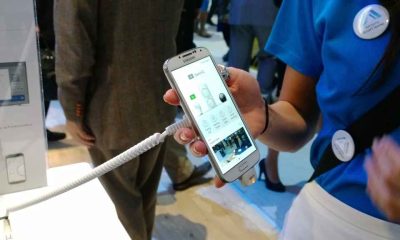
 Guides1 year ago
Guides1 year ago10 Best Apps To Control All Your Smart Home Devices.
-
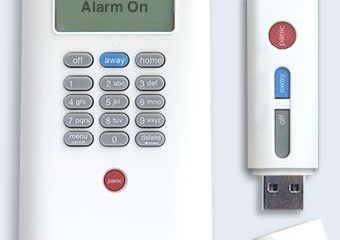
 Gadgets3 years ago
Gadgets3 years agoWhat Is The Purpose Of Red Button On The SimpliSafe Keypad?
-
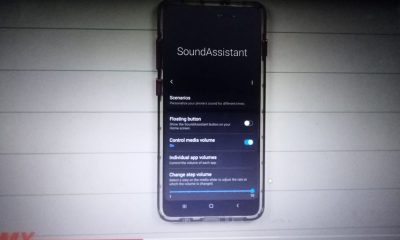
 Gadgets3 years ago
Gadgets3 years agoComplete Guide About Equalizer settings for Samsung-Soundbar
-
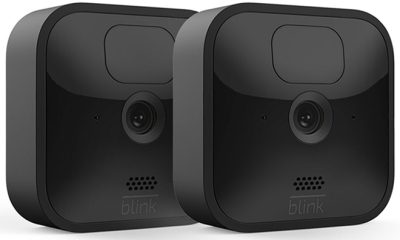
 Accessories2 years ago
Accessories2 years agoBlink Camera’s Temperature Sensor Settings, and More
-

 Gadgets3 years ago
Gadgets3 years agoFitbit Symbols Meaning: What Do The Fitbit Icons Mean?
-

 Solutions3 years ago
Solutions3 years agoWhy is My Samsung TV Picture So Dark? Exploring the Possible Causes
-

 Accessories2 years ago
Accessories2 years agoCan Siri Control Samsung Televisions And Are Samsung TVs Homekit Compliant?


